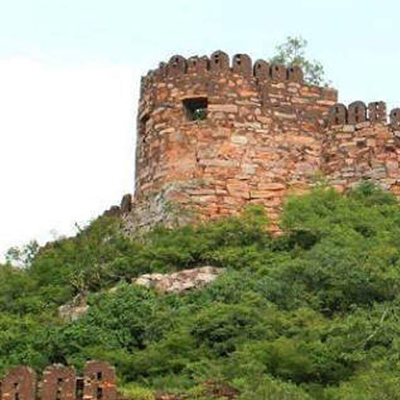Udayagiri Fort - Tamilnadu

Udayagiri Fort is a historical fort located in the Vellore district is a popular tourist destination in Tamil Nadu. The fort is situated on a hill and offers stunning views of the surrounding landscape. It was built during the 16th century by the Vijayanagara Empire and later expanded by the Marathas, the Nawabs of the Carnatic, and the British. The fort is spread over an area of 70 hectares and is surrounded by a moat. It has three entrances, with the main entrance facing east. The fort is made up of granite and has a complex layout with several buildings, including a palace, a temple, and barracks. The palace inside the fort is a magnificent structure with intricate carvings and sculptures. The temple, dedicated to Lord Shiva, is an important pilgrimage site for devotees. The barracks served as accommodation for the soldiers who were posted at the fort. The fort has played a significant role in India's history. During the Carnatic Wars of the 18th century, it was used as a base by the French and the British. The fort is also associated with the famous Tipu Sultan, who fought against the British during the Anglo-Mysore Wars. The fort has been well preserved and is a popular tourist destination. Visitors can explore the various buildings and soak in the rich history of the place. The fort is an important reminder of India's rich cultural heritage and the military prowess of its past rulers. Udayagiri Fort is a must-visit destination for history buffs and anyone interested in India's rich cultural heritage. It is a testament to the architectural skills and military might of the rulers of yesteryear. Whether you are a history enthusiast or just looking for a peaceful getaway, Udayagiri Fort is definitely worth a visit.
History of Udayagiri Fort
The fort was first built by the local Velir chiefs, who ruled the region during the Sangam period. However, it was the Vijayanagara Empire that significantly expanded and fortified the fort in the 16th century. The Vijayanagara Empire was one of the most powerful empires in South India at the time, and Udayagiri Fort was an important part of their defense system. In the early 17th century, the fort came under the control of the Bijapur Sultanate, who further strengthened the fort's fortifications. During their rule, they added several structures, including a mosque and a palace. In the late 17th century, the fort was captured by the Marathas, who ruled over it for several decades. During their rule, they added several Hindu temples and other structures to the fort. In the early 18th century, the fort was captured by the French, who used it as a base for their operations in South India. However, they were eventually defeated by the British, and Udayagiri Fort came under the control of the British East India Company. During British rule, the fort was used as a military barracks and a jail. Many freedom fighters and revolutionaries were imprisoned in the fort during the Indian freedom struggle. Today, Udayagiri Fort is a protected monument under the Archaeological Survey of India.
Architecture of Udayagiri Fort
The fort is an impressive example of military architecture and engineering, and it has played a significant role in the history of the region. The Udayagiri Fort was first built during the reign of the Vijayanagara Empire in the 16th century. It was later expanded and strengthened by the Marathas, the Nawabs of the Carnatic, and the British. The fort is surrounded by a deep moat and is accessible through a series of gates and fortified walls. The main entrance to the fort is through the Eastern Gate, which is a massive structure made of granite. The gate is surrounded by high walls and is accessible through a steep ramp. The gate is guarded by two huge elephant-shaped stone structures, which were added during the Maratha period. Once inside the fort, visitors are greeted by a large open courtyard, which is surrounded by several buildings, including the palace of the Nawabs, a mosque, and a number of other structures. The palace of the Nawabs is a grand building with tall pillars and ornate carvings. It was built during the Nawab period and is a testament to the architectural prowess of the region. The mosque within the fort is a beautiful example of Islamic architecture. It has a large dome and several tall minarets. The mosque is still in use today and attracts worshippers from far and wide. The fort also has several tanks and wells, which were used to supply water to the fort's inhabitants. The tanks are surrounded by high walls and are accessible through a series of steps.
Speciality of Udayagiri Fort
One of the most remarkable aspects is the historic foundry that was used to cast firearms inside the fort.
How to reach Udayagiri Fort?
By Air- Thoothukudi airport is the nearest to reach Udayagiri Fort covering 125 Km
By Train – Nagercoil Railway station is the nearest junction to reach Udayagiri Fort covering 15 Km.
By Road – Driving from Nagercoil through Thiruvananthapuram-Nagercoil National Highway (Puliyoorkurichi) covering 12 Km.